You are here
Responsibility, autonomy and evaluations for the improvement of schools
About the speaker
Mats Ekholm
Professor and Head of the Research Group on Development and Socialisation in Schools at the University of Karlstad Former Director General of Education for the Swedish Ministry of Education
Main idea
The Swedish education system is based on the concept of inclusive schooling (a single school for everyone), where each student follows a personal education plan. At the organisational level, it is a decentralised system in terms of both management and curricular content. Schools have considerable autonomy; however, they must meet certain objectives. To this end, different evaluations are carried out, the results of which are then published and used as the basis for improvement. Significant emphasis is also placed on training for teachers and school leaders.
The emergence of a new concept of education
Some 100 years ago, in Sweden, consideration was given to the need to change the classic concept of education, wherein a teacher teaches and students learn. Under the new concept of education, schools are no longer places to teach, but rather places to learn. Today’s schools revolve not around the teacher, but the student. Students have gone from being passive subjects who listen, learn and repeat to being individuals who think, opine and question.
The function of the teacher is to guide this learning.
This new concept of schools gave rise to a new school system, which was implemented in the 1950s and 60s. It is an inclusive system, based on the idea of schooling for all.
How is the Swedish education system organised?
Preschool: ages 3 to 5. Not compulsory.
Preschool: age 6. Compulsory.
Grund school: ages 7 to 16. Compulsory
Gymnasie: ages 17 to 19. Not compulsory, but 95% of grund school students go on to gymnasie. The goal is for everyone to have the option of going to university. Half of all young people (50%) enrol at university.
Grund school
• It is an inclusive system, in which all types of children and young people (including those with physical, mental or learning disabilities) attend school together.
• Students have the same classmates for 9 years.
• Teachers have the same students for a period ranging from 3 to 6 years. Changing teachers each year is not considered advisable. Working together for so many years makes it easier to work on emotions and for teachers and students to receive detailed and extensive feedback.
• The teacher-student ratio at grund schools is 1:7.
Decentralised structure
The Swedish education system is based on decentralisation and the assumption of responsibilities by each of the participating parties.
• The parliament establishes general education law.
• The government sets the specific goals to be met.
• The kommuns (decentralised local governments, similar to town councils, of which there are 290 in Sweden) receive funds from the state and decide how to distribute them among their schools according to each one’s needs. Annual spending per student is €8,000. The local kommun board appoints the school headmaster or headmistress and is responsible for setting teachers’ salaries (there is no fixed salary for teachers).
• Each school manages its own budget and decides on its own curriculum and how to implement it. In exchange, it must provide all possible resources to achieve the main goal, namely, to ensure that students learn.
What are students expected to learn?
• Teachers must guide students to help them learn to think, feel, express themselves, create, produce and decide. Emotional education is considered just as important as academic education.
• A second language, English, is introduced at age 7. A third language, which may be Spanish, German, French or Russian, is introduced at age 12. The goal is for students to be able to express themselves properly in these languages.
• A new objective was introduced in the 1990s due to the rise of ICTs. In today’s world, one never stops learning. Therefore, students must learn to learn.
• As for values, the Swedish school system strives to make students independent, co-operative, tolerant, honest and responsible and to ensure that all students dare to put their knowledge and skills to use.
Evaluations
• The Swedish system uses several types of evaluations, geared towards determining whether or not goals have been met. However, the primary purpose of these evaluations is to serve as tools for improvement. To this end, they are used by the national government, kommuns and teachers.
• Each year, the kommun commissions an evaluation from the school, the results of which are published online. The results are also sent to the National Agency for Education.
• For a time, national evaluations were conducted every three years. Today, these evaluations are spaced further apart, as three years is considered too little time to assess and correct anything that does not work.
• The Swedish system also participates in several international evaluation systems.
Individualised plan for each student
• An individualised plan is designed for each student and revised every six months by his or her teachers and parents. Teachers test students, but students are not marked until the age of 11.
• In addition to the tests given to students by teachers, national aptitude tests are conducted in the third and fifth grades. National tests of Swedish, maths and English are given in ninth grade.
• The national tests also give teachers an idea of students’ levels and help them plan any necessary improvements.
• The results of the national tests are published online, along with statistics broken down by school.
Training for the teaching staff and school leaders (headmasters and headmistresses)
• Teachers are required to undergo continuous training. They must engage in training 13 days a year.
• School leaders must also undergo a training process, to which end they must know how to manage a school well and be familiar with the school environment. They must have a background in administration and management, but must also be able to find solutions for any problems or possible conflicts that might arise among teachers or students or with parents. This job is highly regarded. There are 15 candidates for each position, 75% of them women.
• Headmasters and headmistresses do not need to be teachers. They may be social workers, psychologists, education specialists, etc. The current trend is not to choose headmasters and headmistresses from among a school’s staff, but rather to bring in someone from outside. When headmasters or headmistresses have previously taught, they may give classes if they wish, but they are not required to do so.
• The headmaster or headmistress plays an important role, as schools have considerable autonomy, not just with regard to their administrative and financial affairs, but also in terms of deciding on the curriculum and how to implement it (e.g., the schools themselves decide how much time to spend on each subject and what methods to follow).
Looking forward: what needs to be done?
• The people who work at schools must produce knowledge and conduct research. It is the only way to improve, once the results of the evaluations are known.
• Teachers need to understand local organisations better and publicise their role outside the school itself with a view to reinforcing the public’s sense of its value. They must appear in public and the media.
• Teachers and school leaders must be constantly thinking about and inventing new learning tools.
Discover
other ideas
-

Schools and immigration: ideas and realities
Julio Carabaña
2009 -

The Crisis of Social Cohesion: School and Employme...
Robert Castel
2009 -

Segregation in schools: social and political chall...
Vincent Dupriez
2009



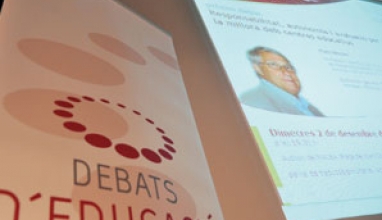
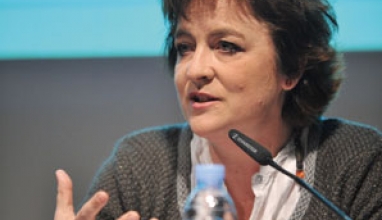
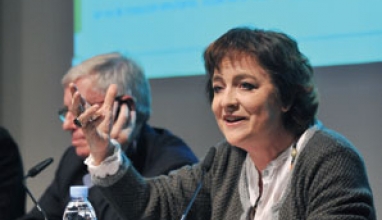
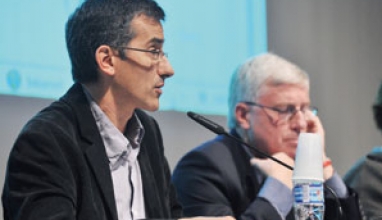




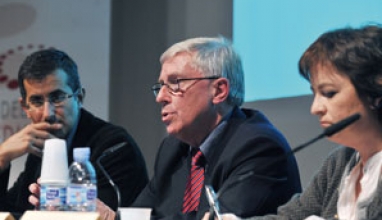

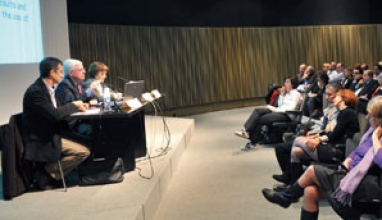
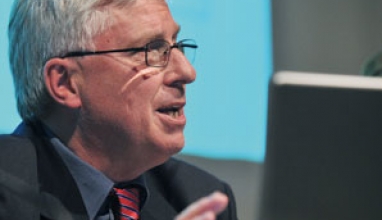
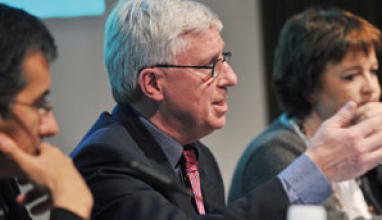
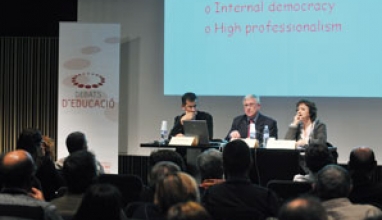
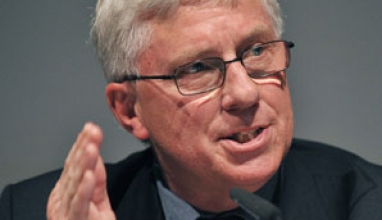
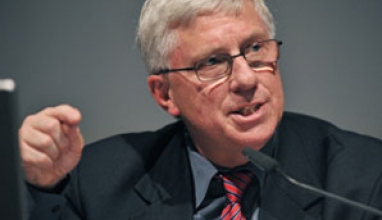
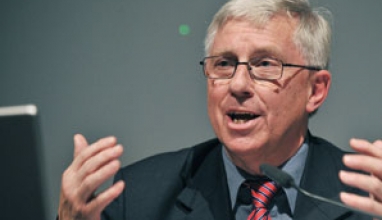
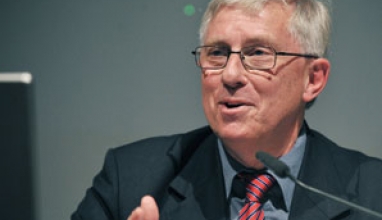
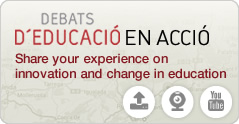
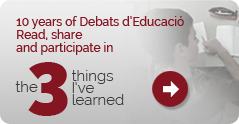

 The texts published on this website are, unless otherwise indicated, covered by the Creative Commons Spain Attribution - Non Commercial - No Derivs 3.0 licence. You may copy, distribute and transmit the work, provided you attribute it (authorship, journal name, publisher) in the manner specified by the author(s) or licensor(s). You may not use the material for commercial purposes. You may not transmit any derivative work from this material. The full text of the licence can be consulted here:
The texts published on this website are, unless otherwise indicated, covered by the Creative Commons Spain Attribution - Non Commercial - No Derivs 3.0 licence. You may copy, distribute and transmit the work, provided you attribute it (authorship, journal name, publisher) in the manner specified by the author(s) or licensor(s). You may not use the material for commercial purposes. You may not transmit any derivative work from this material. The full text of the licence can be consulted here: